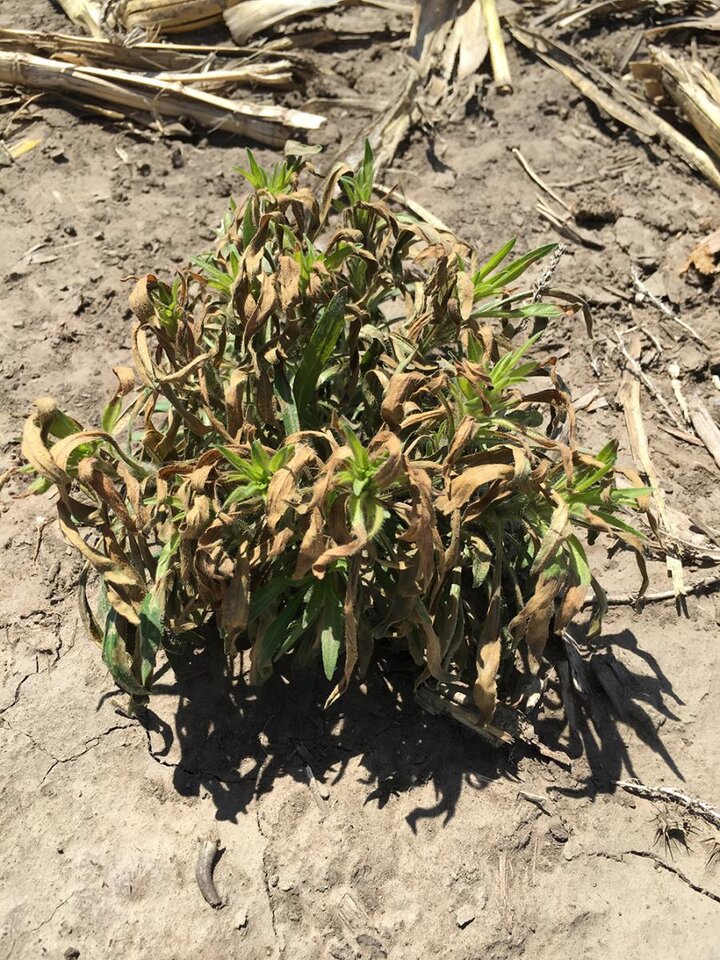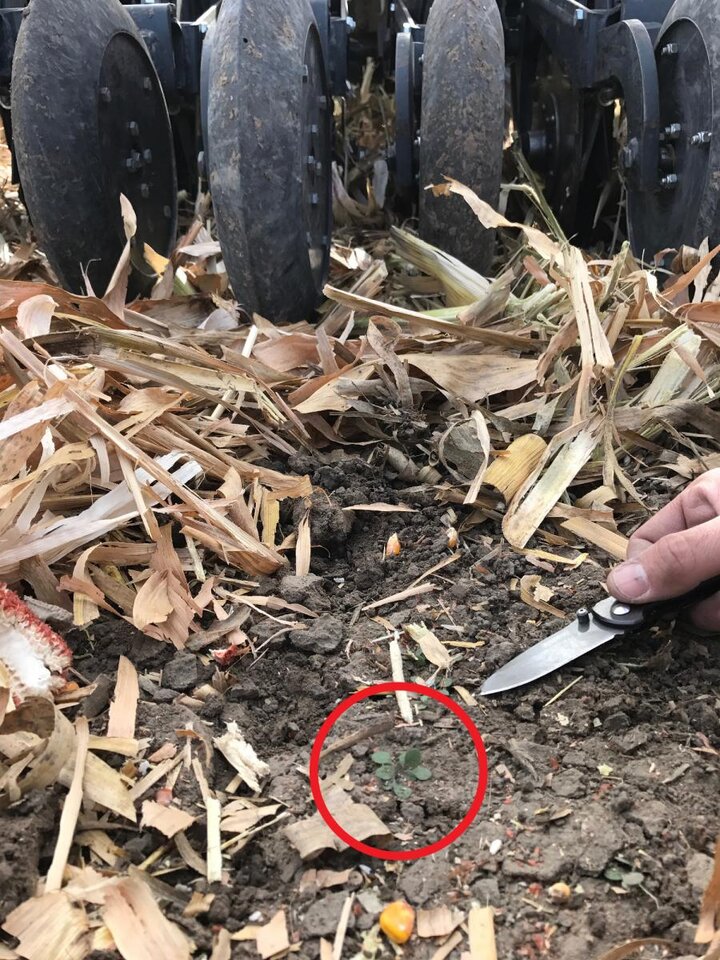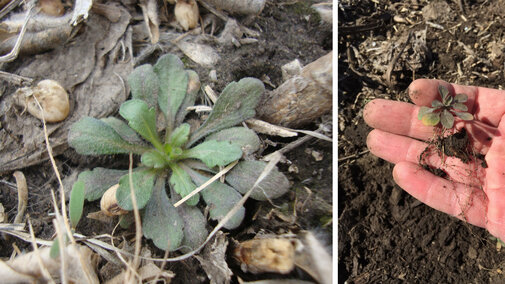With corn and soybean harvest nearing completion in Nebraska this is a great time to begin scouting fields for winter annual weeds. The primary species to look for is marestail (also known as horseweed; Figure 1), as many populations in Nebraska have evolved resistance to glyphosate and ALS-inhibiting herbicides. Timing is critical to successful control of marestail, especially in no-till soybeans as herbicide options are limited.
During the 2016 growing season, UNL extension educators and specialists received numerous reports from producers and consultants about unsatisfactory marestail control, particularly in soybeans. Poor control in soybean was often due to late application of herbicides where marestail had already bolted and was too big for successful control (Figure 2).


During the 2016 Soybean Management Field Days, and the 2016 Water and Crops Field Day at North Platte, 290 farmers and consultants were surveyed and over half reported problems with glyphosate-resistant marestail in soybeans. Of those who reported problems with marestail, only 25% apply herbicides in the fall. However, UNL research suggests fall management of marestail and other winter annual weeds is often more effective than spring applied management programs.
Benefits of Fall Herbicide Application for Marestail Control
Marestail is classified as a surface-germinating, facultative winter annual weed. This means that no-till (where surface disruption is minimal) favors marestail establishment and that seedlings can emerge in the fall and spring depending on climatic conditions. According to research conducted in eastern Nebraska, more than 90% of marestail emerged in the fall. Studies have indicated that fall-emerging marestail tend to have higher winter mortality; however, plants that do survive produce more seed and are more competitive compared to spring-emerged marestail.
Marestail plants can produce up to 200,000 seeds and spread mainly by wind. Even if you have not had previous problems, it may be worth taking time to walk your field edges this fall to determine if a preventative application is justified and to avoid surprises in the spring. Marestail starts off as a small rosette (Figure 1), typically 1-4 inches across, and may require special attention when scouting fields as plants can be easily covered by crop residue (Figure 3).
Fall Herbicide Recommendations
For successful marestail management in the fall, apply herbicides following harvest while weather conditions remain favorable (air temperature above 50°F and low winds). Preliminary data for eastern Nebraska suggests that a fall burndown applied with a residual herbicide may eliminate the need for an early spring burndown for marestail control; however, this would not replace an at-planting residual application for management of additional troublesome weed species such as waterhemp and Palmer amaranth.
If marestail management is postponed until early spring, as soon as weather conditions become appropriate (temperature above 50°F), apply a burndown along with residual herbicides to control established plants prior to bolting and to suppress the ones that may not have emerged.
For specific herbicide options to control marestail and other winter annual weeds please check the Guide for Weed Management in Nebraska or contact your local UNL extension educator, and always read herbicide labels before application.
Keep in mind that using effective herbicides from different modes of action will help you battle the evolution of herbicide-resistant weeds. (Rotation, rotation, and rotation!)

